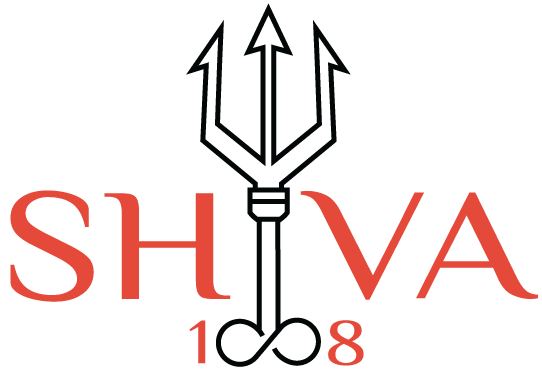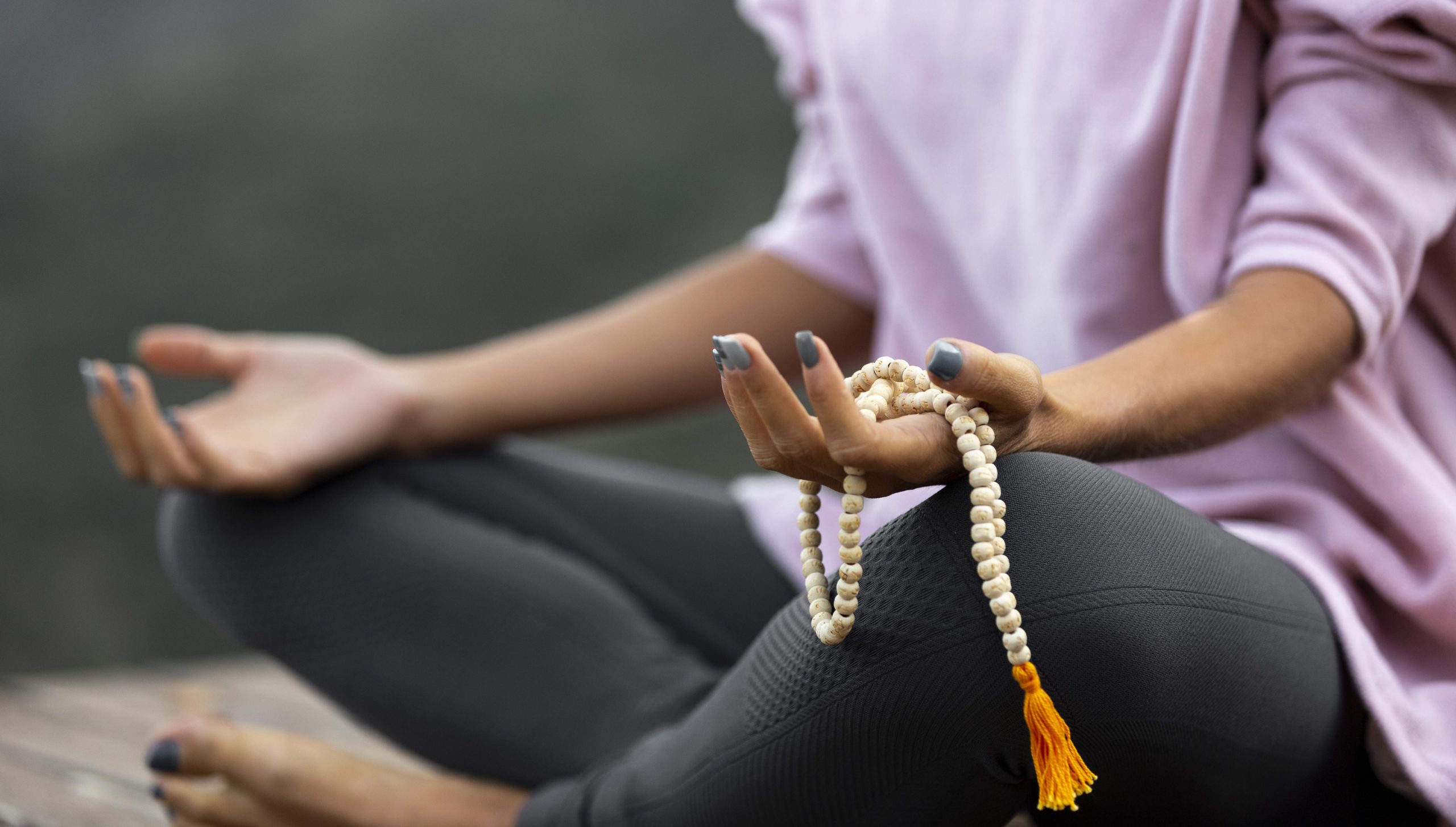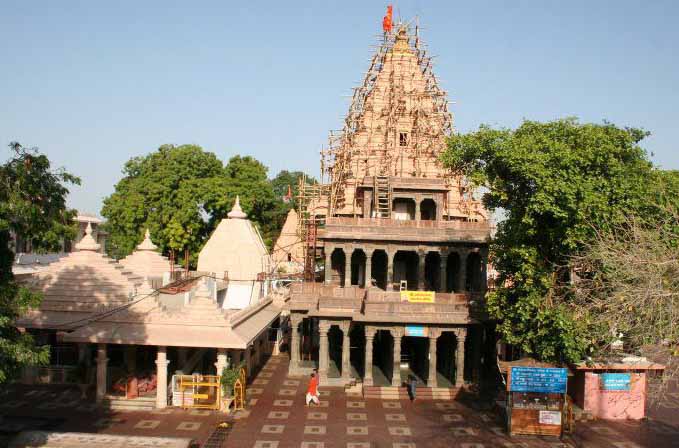The Panchakshari Shiva Mantra is one of the most revered and powerful mantras in Hinduism, dedicated to Lord Shiva. The mantra consists of five syllables: “Na-Ma-Shi-Va-ya” (न-म-शि-व-य), hence the name “Panchakshari,” which means “five-syllabled.” The mantra is also sometimes written as “Om Namah Shivaya.”
ॐ नमः शिवाय ||
Om Namah Shivaya
Each syllable of the mantra holds its own significance:
- “Om” (ॐ) represents the universal sound and the essence of the ultimate reality.
- “Na” (न) symbolizes earth.
- “Ma” (म) represents water.
- “Shi” (शि) symbolizes fire.
- “Va” (व) represents air.
- “Ya” (य) symbolizes space or ether.
Reciting or chanting this mantra is believed to invoke the blessings of Lord Shiva and can be a powerful means of seeking spiritual growth, inner peace, and liberation. It is often used in meditation and devotional practices by Hindus and followers of Shiva. The repetition of the mantra is thought to purify the mind and bring the practitioner closer to the divine.
It’s important to approach the chanting of this mantra with sincerity and devotion, as it is considered a sacred and profound practice in Hinduism.
Table of Content
Benefits
Chanting this mantra is believed to have several benefits:
- Spiritual Connection: Chanting the Panchakshari Shiva Mantra helps establish a deep spiritual connection with Lord Shiva, one of the principal deities in Hinduism. It is a way to seek his blessings and guidance on the spiritual path.
- Mental Peace: Regular chanting of this mantra is believed to calm the mind and reduce stress and anxiety. It can help create a sense of inner peace and tranquility.
- Purification: The mantra is thought to purify the mind and soul. It is believed to cleanse negative energies and thoughts, allowing one to progress on the spiritual journey.
- Protection: Devotees believe that chanting the Panchakshari Shiva Mantra can provide protection from negative forces, both external and internal. It is said to create a protective shield around the practitioner.
- Self-Realization: The mantra encourages self-awareness and self-realization. It is seen as a tool for introspection and understanding one’s true nature.
- Karma Purification: Chanting this mantra is thought to purify one’s past karma, potentially leading to a more favorable future.
- Health Benefits: Some practitioners believe that the mantra has a positive impact on physical health. It is said to balance the body’s energy and promote overall well-being.
- Inner Transformation: Regular practice of the Panchakshari Shiva Mantra is believed to facilitate inner transformation, promoting qualities such as compassion, love, and devotion.
- Dissolution of Ego: The mantra’s repetition can lead to a diminishing of the ego and the realization of the interconnectedness of all beings.
- Blessings and Grace: Many devotees believe that chanting this mantra can invoke the blessings and grace of Lord Shiva, which can lead to spiritual growth and liberation (moksha).
It’s important to note that the efficacy of the mantra is often tied to one’s faith, devotion, and sincerity in the practice. While some people chant it as part of their daily spiritual routine, others may engage in dedicated japa (repetition) of the mantra. Ultimately, the benefits one derives from the Panchakshari Shiva Mantra are a matter of personal belief and experience.
How To Do
This mantra is dedicated to Lord Shiva and is believed to have the power to purify the mind, body, and soul. Here’s how to practice it:
- Preparation: Find a quiet and peaceful place where you can sit comfortably without distractions. You may sit in a cross-legged position or in a chair, as long as your spine is straight. Lighting a lamp or incense can help create a sacred atmosphere.
- Relax: Take a few deep breaths to calm your mind and relax your body. Clear your mind of any distractions or worries.
- Chanting the Mantra: Begin to chant the mantra “Om Namah Shivaya” either silently in your mind or aloud. Pronounce each syllable clearly and with devotion. The pronunciation is as follows:
- “Om” is pronounced as “Aum.”
- “Na” is pronounced as “Nah.”
- “Ma” is pronounced as “Mah.”
- “Shi” is pronounced as “Shee.”
- “Va” is pronounced as “Vah.”
The mantra is typically chanted as “Aum Nuh-mah Shee-vah-yah,” and you can repeat it continuously or for a specific number of times according to your preference or tradition.
- Meditation: As you continue to chant the mantra, you can close your eyes and focus on the sound and vibration of the mantra. Try to connect with the divine energy of Lord Shiva. If your mind wanders, gently bring your focus back to the mantra.
- Duration: You can chant the mantra for as long as you like, whether it’s a few minutes or a more extended session. Some people practice it for a specific number of repetitions, such as 108 times or 1008 times.
- Conclude: When you are ready to conclude your practice, stop chanting and sit quietly for a moment. Reflect on the experience and offer gratitude to Lord Shiva.
- Daily Practice: It’s beneficial to make this a daily practice for spiritual growth and inner peace. Consistency is key.
- Respect: Approach this mantra with sincerity and respect for its sacred nature. It is considered a powerful tool for transformation and spiritual evolution.
Remember that the Panchakshari Shiva Mantra is a deeply spiritual practice and should be undertaken with a sincere heart and pure intentions. It is believed to have the potential to bring about positive changes in one’s life and to lead towards spiritual realization.
Best Place
Here are some common places and occasions where you can chant the Panchakshari Shiva Mantra:
- At a Temple: Chanting the Panchakshari Shiva Mantra at a Shiva temple is a highly auspicious and spiritually uplifting experience. You can recite it while standing in front of the Shiva lingam or while participating in the temple’s rituals and aarti.
- During Meditation: The Panchakshari Shiva Mantra is often used as a mantra for meditation. Sit in a quiet place, close your eyes, and chant the mantra to deepen your meditation and connect with the divine.
- At Home: You can create a sacred space in your home, light a lamp or incense, and chant the mantra as part of your daily worship or meditation practice.
- During Festivals: Many Hindu festivals, such as Maha Shivaratri, are dedicated to Lord Shiva. Chanting the Panchakshari Shiva Mantra during these festivals is considered highly meritorious.
- On Special Occasions: Recite the mantra during important life events, like birthdays, weddings, or other significant ceremonies, to seek Lord Shiva’s blessings.
- In Times of Stress or Need: Chanting this mantra can provide solace and inner peace during times of distress or when you need guidance and support.
- Japa (Mantra Chanting): You can engage in japa, which is the repetitive chanting of the mantra. Use a mala (prayer beads) to keep count while chanting the mantra 108 times or in multiples of 108.
- Yoga Practice: Incorporate the Panchakshari Shiva Mantra into your yoga practice. Chanting it during asanas or at the end of your yoga session can enhance your spiritual experience.
- Before Sleep: Chanting the mantra before going to bed can help you have a peaceful and restful sleep, as well as invoke the blessings of Lord Shiva.
- Pilgrimages: When visiting sacred places associated with Lord Shiva, such as Kashi (Varanasi), Rameswaram, or Amarnath, chant the Panchakshari Shiva Mantra to enhance your spiritual experience.
Remember that the chanting of this mantra should be done with devotion, sincerity, and a pure heart. It is believed to have the power to purify the mind, remove negative energies, and lead one on a path of spiritual awakening.
Best Time
The best time to chant this mantra can vary depending on individual beliefs and practices, but there are some general recommendations:
- Early Morning (Brahma Muhurta): Traditionally, the best time to chant the Om Namah Shivaya mantra is during the early hours of the morning, preferably during Brahma Muhurta, which is the 1.5-hour period before sunrise. This time is considered highly auspicious for spiritual practices as it is believed to be when the mind is calm and receptive.
- During Meditation: Many people incorporate the chanting of this mantra into their daily meditation practice. You can chant it repeatedly while meditating to deepen your focus and connection with the divine.
- During Special Occasions: Chanting the Panchakshari Shiva Mantra is also considered beneficial on special occasions like Maha Shivaratri, Mondays, Pradosha Vratam, and other significant Shiva-related festivals.
- Before Shiva Puja or Abhishekam: It’s common to chant this mantra before performing a Shiva Puja (worship) or an Abhishekam (ritual bath) of a Shiva Lingam.
- When Seeking Solace or Guidance: You can chant the mantra at any time when you feel the need for solace, inner peace, or guidance. It can be a powerful tool for spiritual and emotional well-being.
- Before Sleep: Some people also chant the mantra before going to bed as it can be a peaceful way to end the day and invoke Shiva’s blessings for a restful night.
Ultimately, the best time to chant the Panchakshari Shiva Mantra is when you can do it with sincerity and devotion. The important thing is to maintain a regular and consistent practice if possible, as the power of the mantra is said to increase with regular repetition and devotion.



